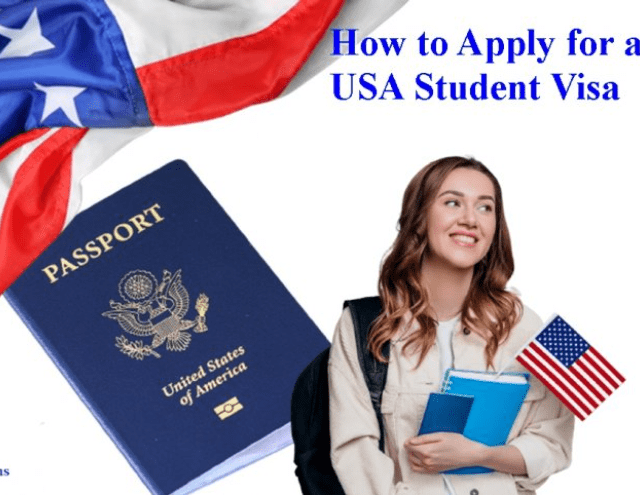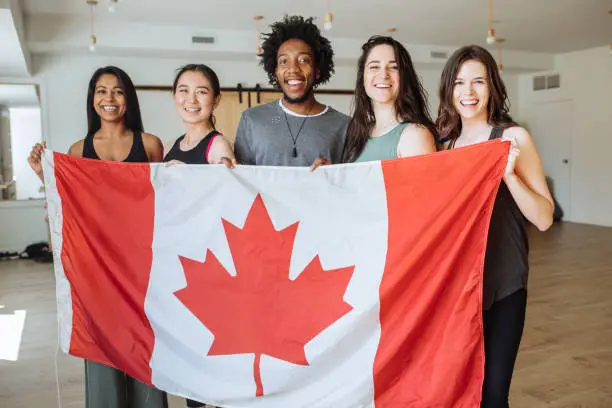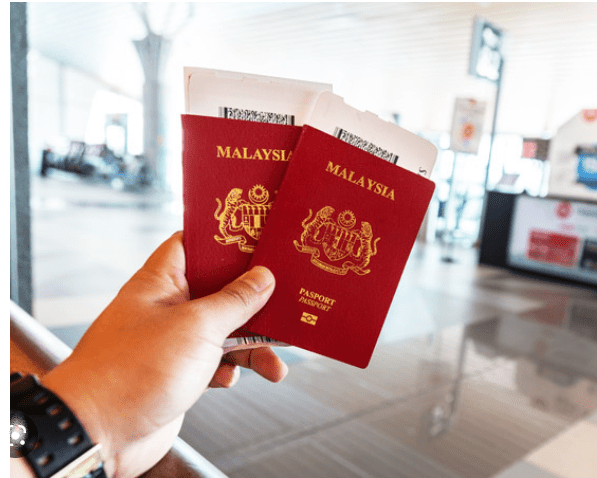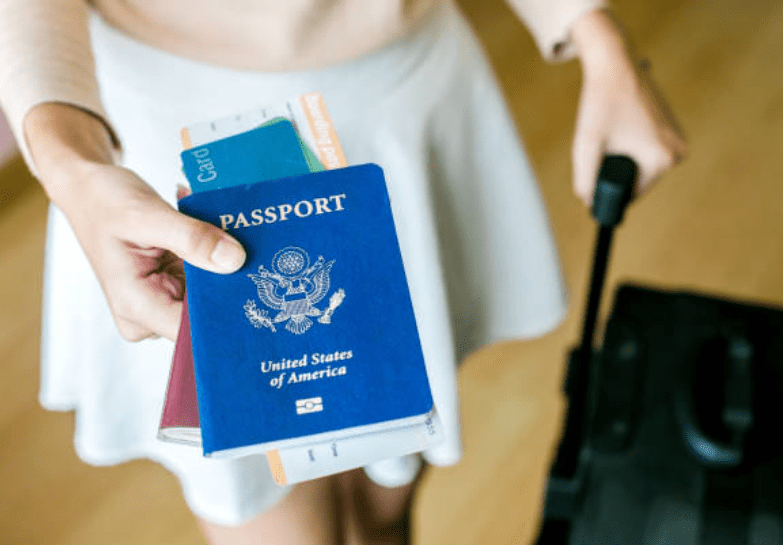What is a U.S. student Visa?
A student visa is a unique endorsement made in a government passport given to students registered at approved educational establishments. It does not need citizenship from the holder.
Just like in every other country, any prospective student who wants to pursue higher education in the U.S. must first acquire a student visa from that country.
To allow international students to attend school within their borders, the majority of nations will provide student visas. In most circumstances, though, the student must first be registered at a post-secondary institution of higher education. Therefore, if you’re an international student who wants to come to the United States, you’ll need both of these visas:
- A non-immigrant visa for a temporary stay or an immigrant visa for permanent residence
- A student visa
Types of U.S Student Visas
Students applying for full-time study programs in the United States have different visa options from those applying for vocational studies, and people living close to the US border who wish to study in the US while living in their country of origin.
The types of US student visas are as follows:
1. The F Visa
F visas are one of the most populous student visas in the United States. It is the most sought-after visa because it is meant for international students who are pursuing academic degrees at any approved University, college, or language (English) studies.
This visa allows the children and/or spouse of the applicant to enter and travel to the US with an attached visa.
- F-1 Visas: this type of visa is meant for international students pursuing a full-time academic degree at any recognized university in the US. The degrees include; BSc, MSc, Ph.D., Post-doctorate, or any other form of full-time study in the States. F-1 visas are for full-time students.
- F-2 visas: this visa type is meant for dependents of the F-1 visa holder. These dependents include; husband, wife, children (under the age of 21 years), and/or same-sex partner.
- F-3 visas: the F-3 visas are meant for students living close to the US border, who are living in their countries of origin but wish to study in the US.
2. The M Visa
This visa category is for students who wish to pursue a non-academic program in the United States. These international students may be interested in obtaining vocational certificates or other forms of certificates.
- M-1 visas: as explained above, the students who have an interest in the M-1 visas are hoping to obtain non-academic certificates after their training. M-1 visas are for non-academic studies like vocational studies.
- M-2 visas: this visa type is for dependents of the M-1 visa holder. These dependents are close relatives (as in F-2 above).
- M-3 visas: are for students who live very close to the US border, and who are living in their countries of origin but wish to obtain a non-academic certificate in the US. M-3 visas are for border commuters (as in F-3 above).
3. The J Visa
This visa type is for the individual who wishes to undergo an exchange program in the US, be it business, cultural, or medical training. To qualify for this type of visa, the students must meet all required criteria and be ready to finish such a program within the stipulated time.
- J-1 visas: This visa is for students traveling for an exchange program. The individuals must have a two-year home physical. This is the visa many medical doctors use in furthering their medical training and has added to bring out the best in our medical institutions.
- J-2 visas: this is for dependents of the J-1 visa holder (as in F-2 above).
When to Apply For U.S Student Visa
Within 120 days of the start date for the institution mentioned on your I-20, you may apply for an F1 international student visa. You can start applying for a visa after April as most US institutions typically begin at the end of August. Make sure to apply as soon as possible to avoid the summertime rush.
Just keep in mind that even if your F1 visa is obtained early, you can only enter the country with one up to 30 days before the I-20-listed start date of your school.
The websites you will need during your application process are:
- The US State website for the non-immigrant DS-160 electronic visa application form.
- Sign up for the USTravelDocs account and make an appointment online.
- The US Immigration website for paying your SEVIS fee.
Required Documents For the Application Process
- A completed non-immigrant visa application form (the DS-160). After completing the form, you’ll get a confirmation page with a confirmation number.
- Your passport. We recommend that you apply with a passport that will be valid longer than the time you will be studying in the US. If it’s not, you’ll have to change the passport later, which adds a lot of unnecessary trouble.
- One (1) 2 x 2 inches (51 x 51 mm) photograph was taken within the last six months with a white background.
- Your I-20. This is proof of your student status in the US and should indicate the school you’ll be attending, the legal period of your stay in the US, and the tuition of your university. The original I-20 has to be signed. If you’re under 18, your parents must sign the form too.
- Your appointment reservation information.
- Your SEVIS fee receipt.
- Your academic plan (such as research study plans, transcripts, schedules, etc.)
- Financial support documents, which can be:
-
-
- Bank statements
- Parent’s employment letter
- Household Register
- Financial grants and scholarship emails from the university
- A recommendation letter from a professor
-
-
How To Apply For U.S Student Visa: Step by Step Guide
- Apply for admission to the institution you want to study. Application instructions are on the website of all the schools. It is only when you have been accepted that you can apply for the visa. Of course, all information you will need in the visa application is on the acceptance letter. The documents you will receive include; I-20 for an F-1 visa or DS-2019 for a J-1 visa. It is advised that you feel these forms carefully to avoid mistakes.
- Schedule an appointment for your visa interview next. Keep in mind that you will need to pay for your application. One of the simplest US visas to obtain is a student visa, which can be issued up to 120 days in advance of the date on your I-20 form. All you have to do is steer clear of errors because they’ll slow down the process. If you are having trouble filling out the form, do well to click Here for further guidance.
- Go to the US State website to fill out the DS-160. This should take you roughly 75 minutes to complete. It’s an extremely thorough application! A page with a barcode confirmation will appear after the application has been submitted.
- After you’ve finished the application, register for the US Travel Doc. You must make a physical appointment and pay the $160 visa fee. Please remember to save your receipt. To schedule an appointment, you require a receipt number. Your receipt won’t be replaced if you misplace it.
- Next, go to the US Immigration website to pay the SEVIS fee and save the receipt. SEVIS stands for Student and Exchange Visitor Information System. This is a system to record all the international students’ and scholars’ information.
- Prepare for your visa interview at this time. We have recommended applicants submit their visa applications well in advance of the start of the next academic year. You will have three (3) business days to complete the visa application before the business is resumed, giving you time to be ready for the visa interview. Get all the information you’ll need, look professional, and provide thorough answers to all inquiries.
What You Must Know For Visa Interview Preparation
- Tell the truth
- Give precise responses
- Bring a bank statement or other form of identification to the interview.
- Keep your cool; the interviewer is looking.
- Clearly state your study plans.
- Put on a suit or professional attire.
If this page has helped you, quickly get started with your arrangements to move to the U.S.
You may need to get the services of the Best U.S Travel Agents to get started.






